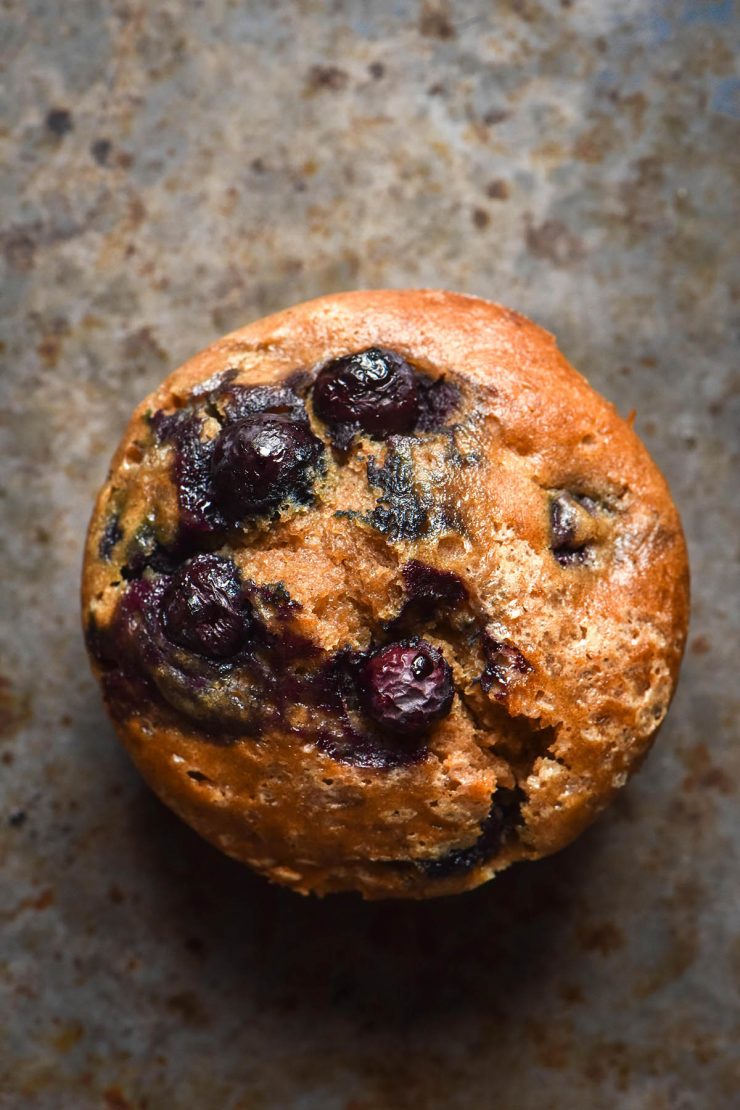
If you have followed me here or on Instagram for any length of time, you’ll know I am absolutely team buckwheat. Not only have I written two e-books of buckwheat recipes, (number 1 and number 2) my favourite gluten free bread recipe is buckwheat and my favourite wraps are too. Next on the agenda? These buckwheat muffins that are egg free, easily vegan and use 100% buckwheat flour.
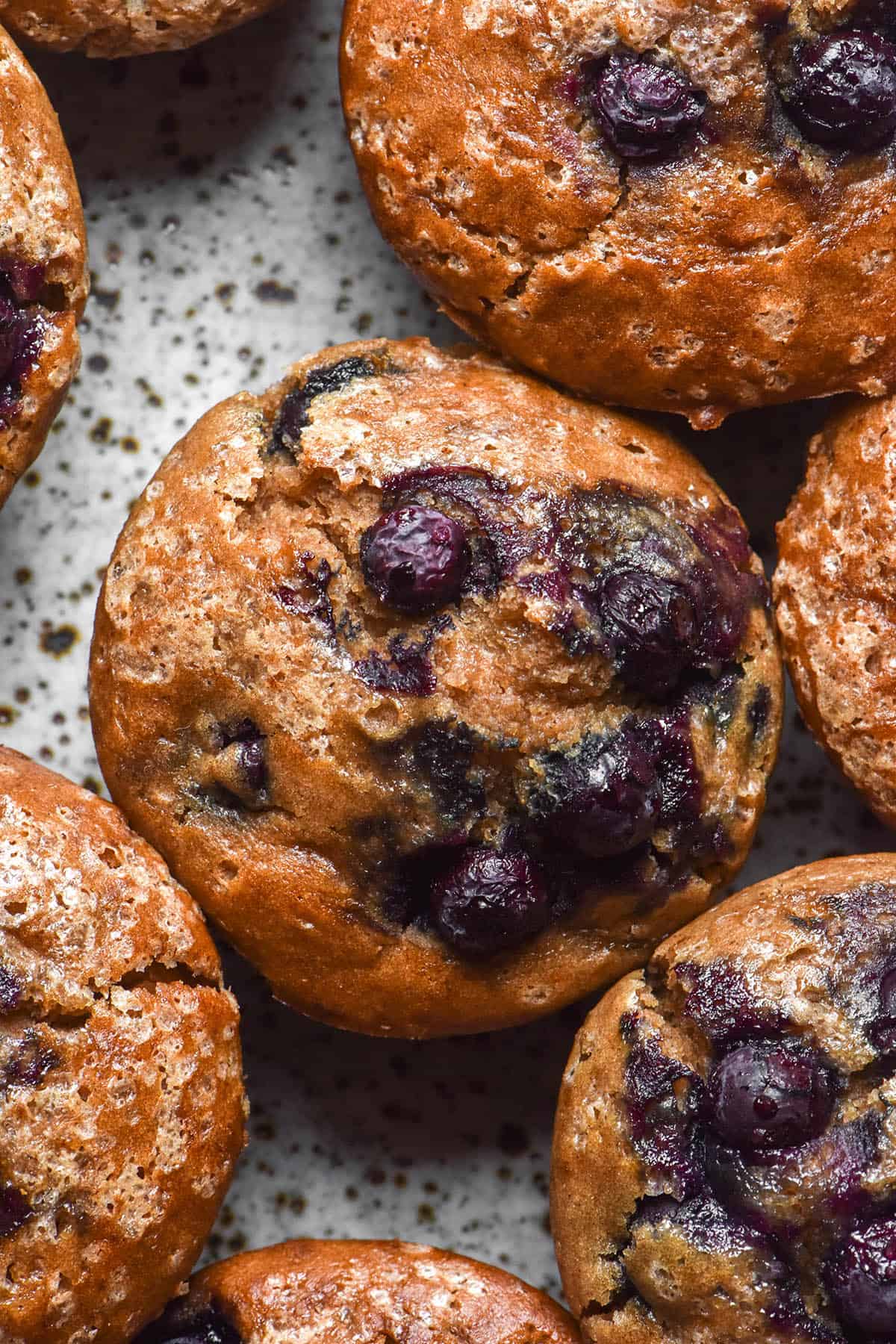
Buckwheat muffins (gluten free)
As we have discussed, these muffins use 100% buckwheat flour – no other flour required. They are xanthan gum free, egg free, nut free and easily dairy free/vegan. They couldn’t be easier to make, with all the mixing occurring in one bowl (no special equipment necessary!).
Buckwheat flour forms the backbone of the muffins which are sweetened with light brown sugar and cinnamon. Thick yoghurt (regular or vegan) melted butter and milk provide moisture and a lovely soft crumb. The muffins are leavened with both baking powder and baking soda. Together, they provide a light and fluffy crumb with a beautiful browned muffin top.
These muffins can be made plain or you can add mix ins to your taste. I have included some tips on using mix ins below. They’re an easy and delicious gluten free muffin that everyone will love.
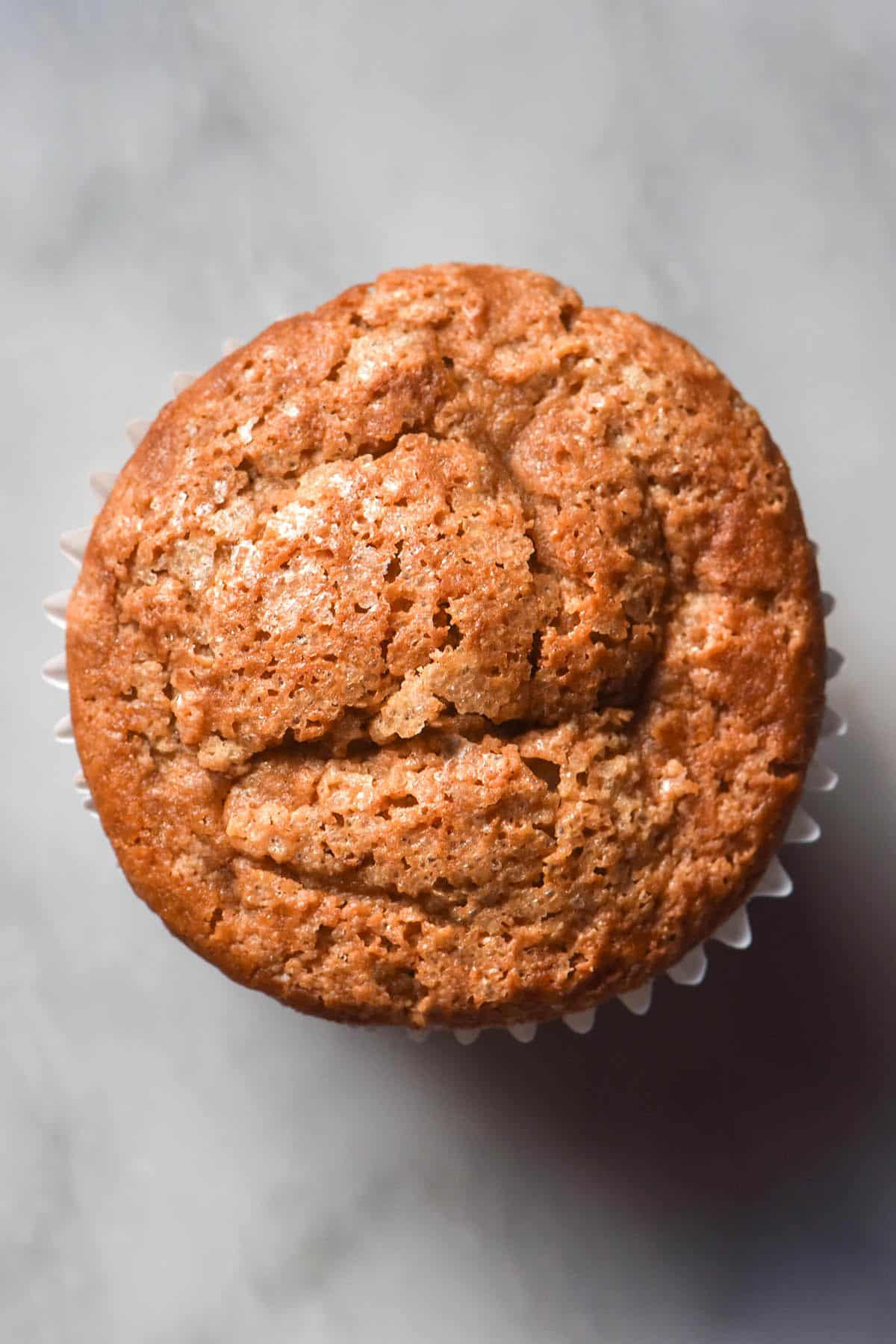
Recipe notes for your buckwheat muffins
I have only tested light buckwheat flour in these muffins. This is all I have access to in Australia. As far as my research goes, light buckwheat flour uses hulled buckwheat, whereas dark buckwheat flour uses un-hulled buckwheat.
This leads me to believe that there might be some differences in absorbency when comparing the two flours. As such, I can’t say with any certainty if substituting the two would work. I think dark buckwheat flour might need more fat and moisture than light buckwheat. Of course, you’re welcome to experiment, but I haven’t used it myself.
On the note of buckwheat: if you haven’t tried it before, you might be taken aback by the taste. Buckwheat is not a neutral flavour – it is a distinctly nutty and earthy one. Keep this in mind, because it might not be something you enjoy.
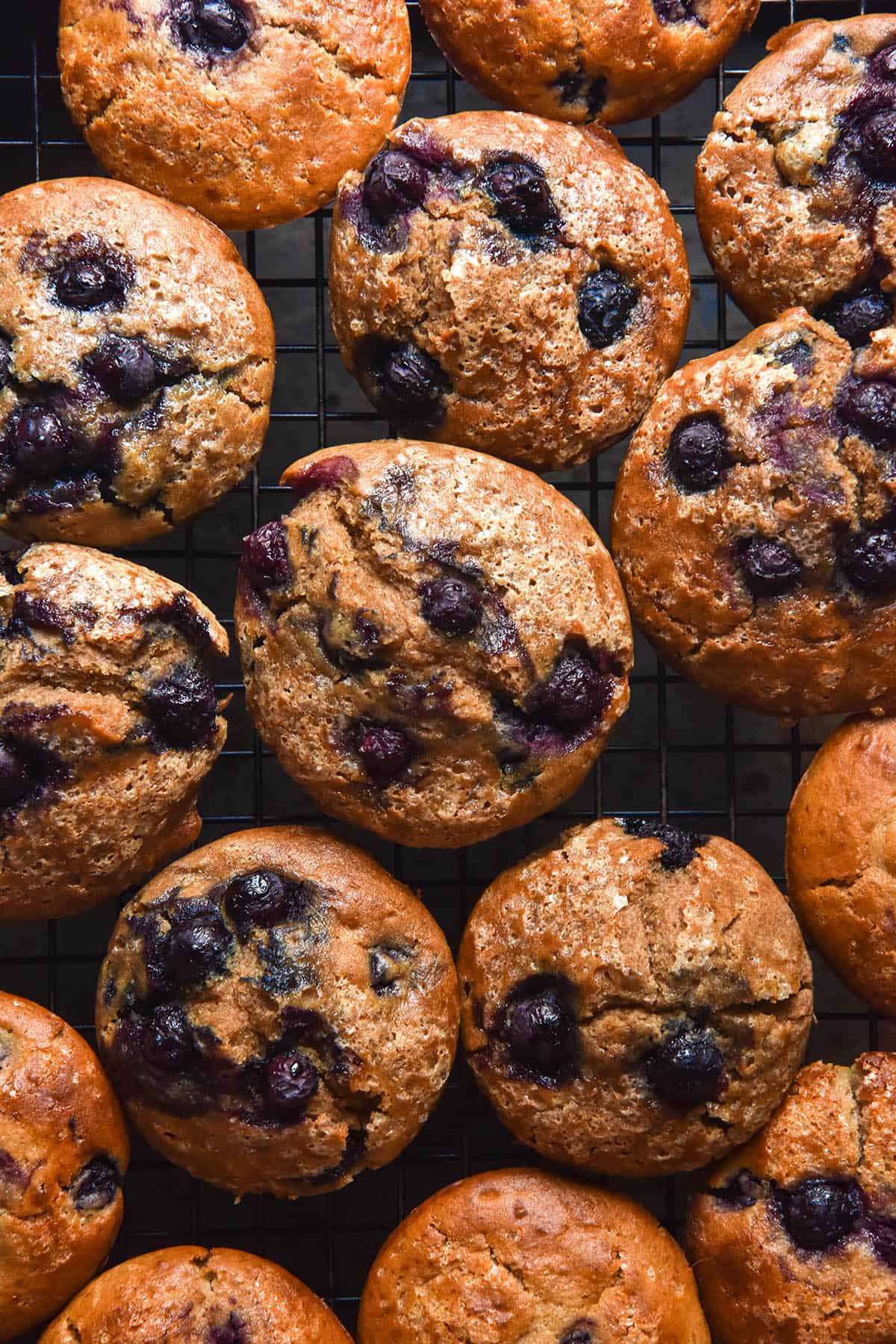
FODMAP notes for your muffins
These muffins are generally low FODMAP, but I do have a few pointers to ensure they remain that way. Buckwheat flour, as a reminder, is 100% gluten free with no relation to wheat. In fact, it is actually more closely related to rhubarb. It is also low FODMAP in 100g serves per person, and this recipe uses 150g. Monash doesn’t currently give an upper limit for buckwheat flour, so it might well have a higher FODMAP threshold.
There is no Monash statement on this as far as I know, but a little caveat on buckwheat flour: as discussed above, light buckwheat flour is made from hulled buckwheat, whereas dark buckwheat flour is made from un-hulled buckwheat.
There is a FODMAP difference between hulled and un-hulled sesame seeds, which makes me wonder if it is the same for buckwheat. I haven’t tested dark buckwheat as I don’t have access to it, but it’s something to consider if you do.
The main things to watch out for in terms of FODMAP content are the yoghurt, milk and any optional mix ins. I have used a super thick lactose free yoghurt here (Jalna, which is my go-to). If you’re based in Australia, eat dairy and need lactose free products, this is the one I recommend (not sponsored, I wish!). It’s super thick which makes it perfect in things like these muffins.
If you plan to make these muffins vegan, try and find a thick yoghurt with low FODMAP ingredients. You can buy one with a flavour, if you like, but you may need to adjust the sugar content to suit (more on that below).
In terms of the milk, your low FODMAP options include lactose free milk, rice milk, macadamia milk and soy milk made from soy protein. Oat milk has a low FODMAP threshold, but it’s not considered gluten free in Australia. Keep this in mind if you are baking for a coeliac.
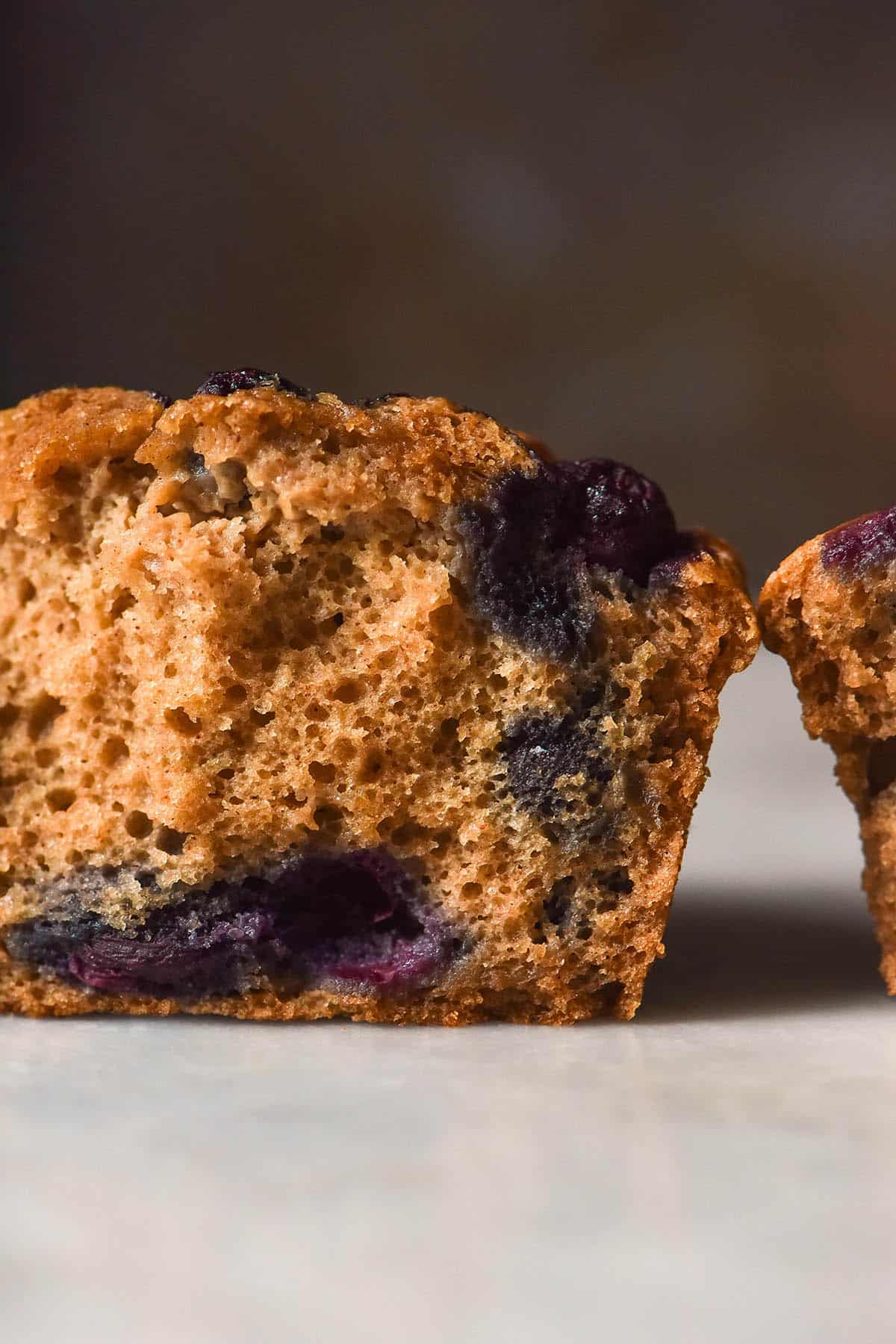
A note on the sugar
First off, I have not tried any sugar alternatives in this recipe. You’re welcome to experiment, but I can’t guarantee the results. I daresay panela sugar would work, but I haven’t tested the theory. Coconut sugar is high fructose and thus high FODMAP, so I haven’t tested this either.
Secondly, you can change up the amount of sugar added a little bit. If you’re using a lightly sweetened yoghurt or sweet mix ins, consider using 100g light brown sugar instead. Keep in mind, of course, that sugar is a wet ingredient. You can’t decrease the volume too much without making a dry muffin.
However, there is that little bit of wiggle room and you are free to experiment. Again, though, I can’t guarantee any no sugar results.
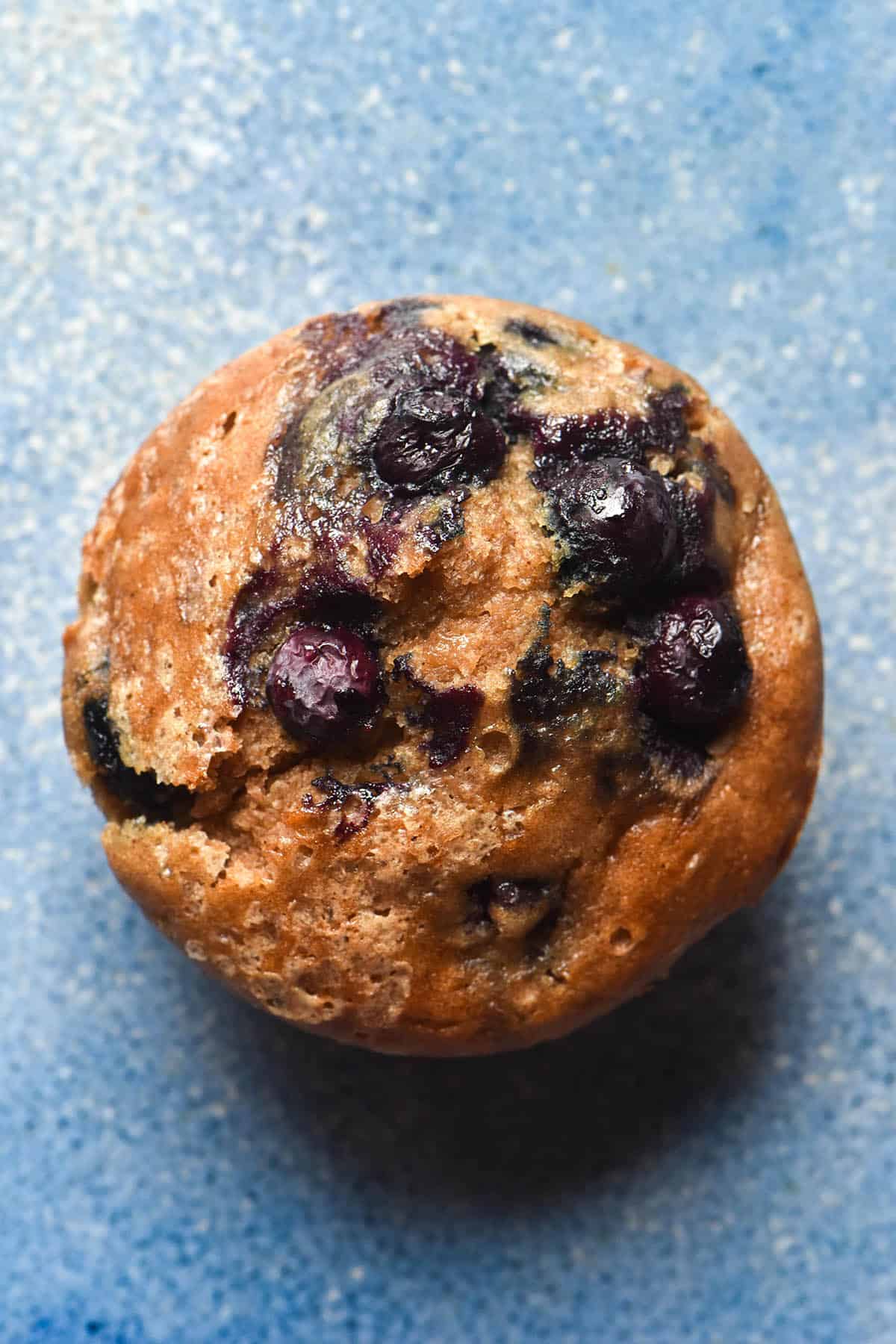
Optional mix ins for your buckwheat muffins
My forever favourite mix in for muffins is the humble blueberry. As you can see, most of the photos were taken of a blueberry muffin option. I have also tested the recipe using frozen blueberries and they worked equally well as fresh ones.
Other mix ins I enjoy are the classics: chocolate chips, raspberries and strawberries. However, the wholegrainy sort of taste of these muffins would probably also go well with dates and spices (sticky date vibe) or raisins and spices (hot cross bun vibe). You can really experiment as you see fit.
If I may offer some tips for experimentation: read the above section on the sugar content as it relates to the mix ins. This will help you balance out the sweetness.
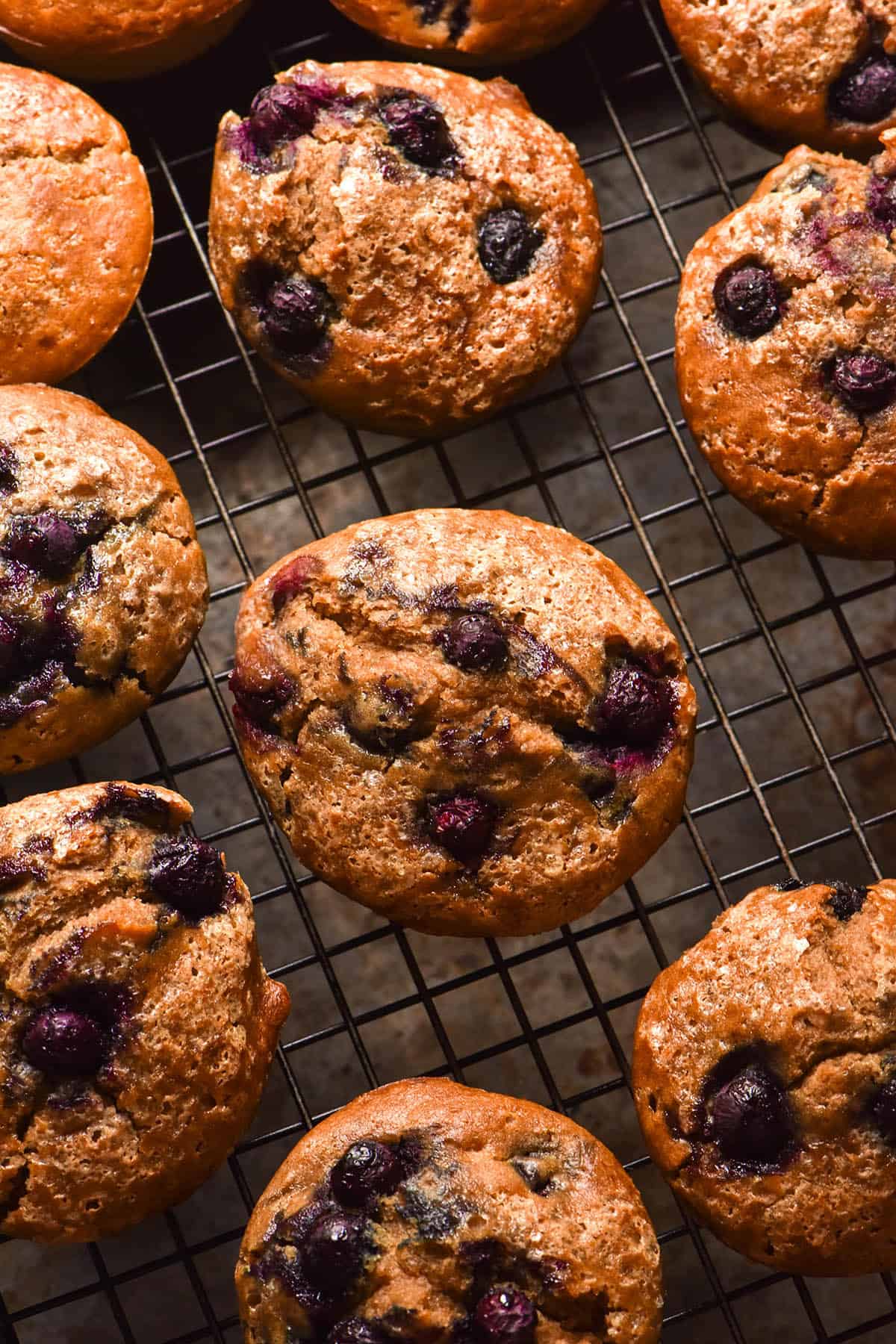
More gluten free baked goods
- Easiest ever gluten free chocolate cake
- Gluten free carrot banana muffins
- Gluten free raspberry white chocolate muffins
- Single flour gluten free lemon drizzle cake
- Gluten free mug cake recipe e-book (10 egg free gluten free mug cake recipes)

Buckwheat muffins (gluten free)
Equipment
- 80ml (1/3 cup) capacity muffin tin (I use 2 X 6 cup capacity silicon muffin tins)
Ingredients
- 150 g light buckwheat flour
- 100 – 125 g light brown sugar
- 2 g baking soda (1/4 teaspoon)
- 2 g baking powder (1/4 teaspoon)
- 2 g cinnamon powder (1 teaspoon)
- 200 g thick Greek yoghurt or plain thick vegan yoghurt of choice (see notes)
- 75 g unsalted butter melted (regular or plant based)
- 125 ml (1/2 cup)* milk of choice
- 125 g fresh or frozen blueberries or other choice of mix ins see notes
- Granulated sugar to finish
Instructions
- Preheat the oven to 200C/400F. Grease or line 8-9 80ml capacity muffin holes.
- In a medium mixing bowl, whisk together the dry ingredients until combined.
- Add the wet ingredients except the mix ins and whisk until a smooth batter forms. It should be a uniform colour with no lumps, and about the consistency of pancake batter. It should be thick enough to just stay on the spoon as you fill the muffin holes. If it looks dry or very thick, add 60ml+ more milk to achieve the described consistency.
- Add the mix ins, reserving some for the tops of the muffins.
- Divide the mixture into the muffin holes, filling them to just below the rim of the muffin hole. Top the muffins with the remaining blueberries or mix ins and finish with a sprinkle of granulated sugar.
- Bake for 20-25 muffins or until cooked through and golden brown. Allow to cool for 10 minutes before transferring to a wire cooling rack.
- Leftovers keep well in an airtight container in the fridge and can also be frozen.
Notes
- These muffins are just sweet. How much sugar you add depends on the yoghurt and mix ins you use.
- A sweetened yoghurt will need less sugar than a plain one. That said, plain lactose free yoghurt tends to be sweet as the lactose is converted to sugars.
- Every bag of buckwheat flour will have a slightly different level of absorbency. Use your intuition and add liquid to suit your batter. If it doesn’t look like it should (as described in the recipe) add more liquid to suit.
- Fresh and frozen berries work well in these muffins.

Made these today with diced pears and dates because that’s what was on hand. Delicious. Will make again.